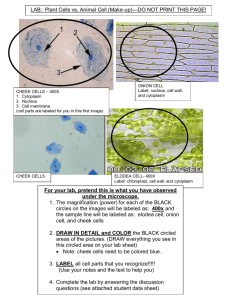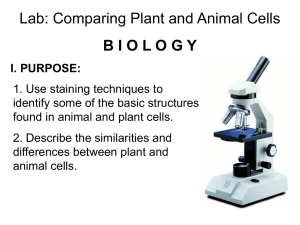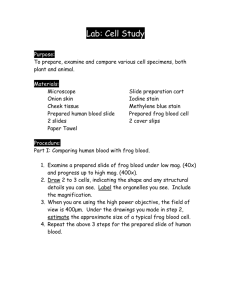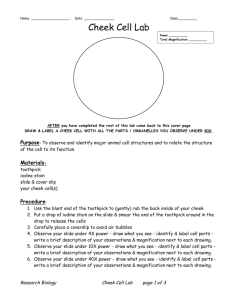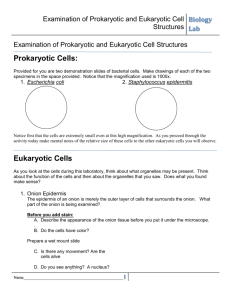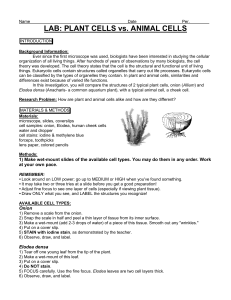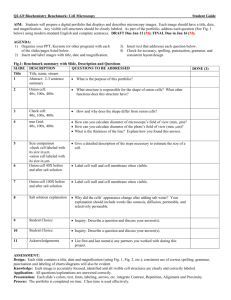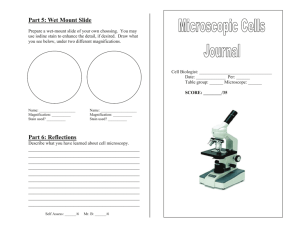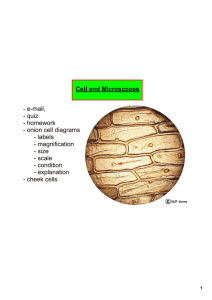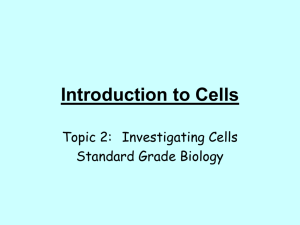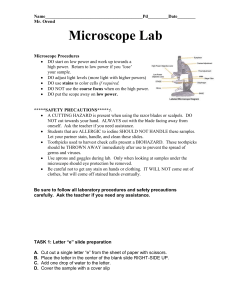Short Plant, Animal, and Bacteria Lab - WAHS
advertisement
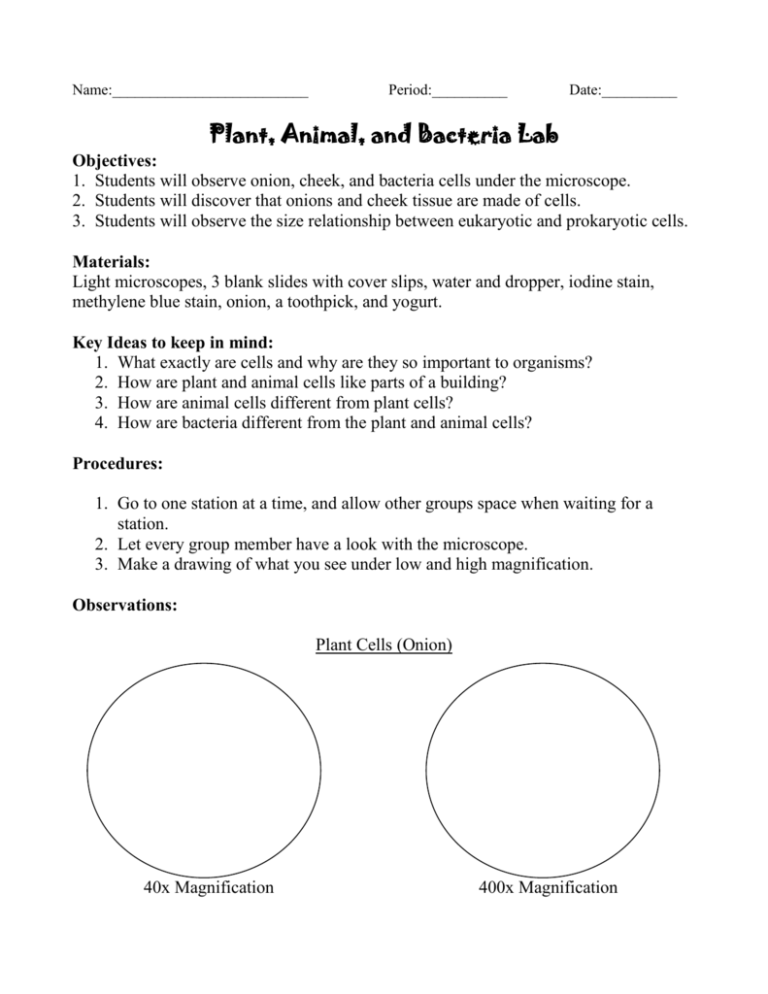
Name:__________________________ Period:__________ Date:__________ Plant, Animal, and Bacteria Lab Objectives: 1. Students will observe onion, cheek, and bacteria cells under the microscope. 2. Students will discover that onions and cheek tissue are made of cells. 3. Students will observe the size relationship between eukaryotic and prokaryotic cells. Materials: Light microscopes, 3 blank slides with cover slips, water and dropper, iodine stain, methylene blue stain, onion, a toothpick, and yogurt. Key Ideas to keep in mind: 1. What exactly are cells and why are they so important to organisms? 2. How are plant and animal cells like parts of a building? 3. How are animal cells different from plant cells? 4. How are bacteria different from the plant and animal cells? Procedures: 1. Go to one station at a time, and allow other groups space when waiting for a station. 2. Let every group member have a look with the microscope. 3. Make a drawing of what you see under low and high magnification. Observations: Plant Cells (Onion) 40x Magnification 400x Magnification Animal Cells (Human Cheek) 40x Magnification 400x Magnification Prokaryotic (Yogurt Bacteria) 400x Magnification Conclusion and Questions: 1. Complete the following chart. Cell Organelle Found in plant, animal, or both Nucleus Cell Wall Chloroplast Cytoplasm Cell Membrane More questions on back… Function 2. Why do we stain the animal and plant cells? _____________________________________________________ _____________________________________________________ 3. Why must the specimen you observe be very thin? _____________________________________________________ _____________________________________________________ 4. Onion cells are plants, why don’t they have any chloroplasts? _____________________________________________________ _____________________________________________________
